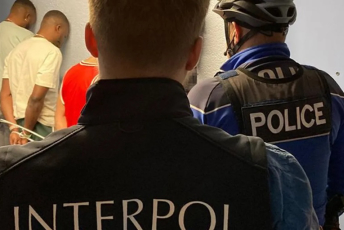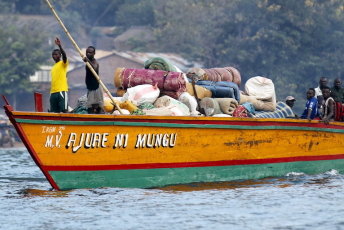Criminal gangs in Kenya’s second largest city, Mombasa, continue to operate with impunity after the government passed a law against them and banned them twice within a decade – in 2010 and 2016. These groups’ violent activities are likely to become more evident as Kenya faces hard economic times due to the effects of COVID-19, and as the country heads towards its 2022 general elections.
It is impossible to say exactly how many groups exist as various sources report different numbers. In 2018, 43 criminal groups were identified as operating in Mombasa by the National Crime Research Centre (NCRC) – a state office under the Ministry of Interior. Francis Auma, rapid response officer at human rights non-governmental organisation (NGO) MUHURI, told ENACT that the number of criminal groups had increased to about 60. It is this growth and highly fragmenting nature of the groups that makes it hard for law enforcement to combat the phenomenon.
Mombasa County Commissioner Gilbert Kitiyo, county security committee, confirmed to ENACT recent media reports that the police in Mombasa have this year arrested about 1 000 members of various armed gangs and identified 132 criminal groups. These groups, linked to a recent spate of attacks and other criminal activities in the city, have become the foot soldiers in Mombasa’s drug trade, keeping the city’s narco image alive. They complement and provide grassroots reach for drug lords in the top tier, as well as businessmen and politicians in the second tier.
France 24 TV’s investigative report in October 2019 showed the city’s rise to being a major drug trafficking hub and route for heroin and cocaine coming from Asia and Latin America to Europe and Dubai. The report attributes the new route to Kenya’s porous 500 km coastline, which allows traffickers to smuggle drugs into the country using small boats and yachts to sustain a trade that the French news channel estimates to be worth about €100 million.
Investigative journalist Andrew Kasuku reports that the trade continues despite recent high-profile convictions of drug lords, for example the Akasha brothers, in the United States. He says the lower tiers collaborate to keep the network alive, with businessmen and politicians using the gangs to control the ground.
Two nationwide bans show the ineffectiveness of Kenya’s response to the existence of these groups. The first ban was in 2010 following the enactment of Section 22(1) of the Prevention of Violent Crimes Act, 2010. There were no follow-up measures in implementing this law. In 2016 the country’s Ministry of Interior imposed a second countrywide ban on criminal groups to outlaw their involvement in the drug trafficking trade and other crimes, including electoral violence.
Despite this double ban, more localised groups have emerged and continue to operate openly in three of the six sub-counties of Mombasa. These are Likoni sub-county (Timbwani and Mtongwe wards), Mvita sub-county (Old Town and Majengo wards) and Kisauni sub-county (Mjambere and Mtopanga wards).
In a 2019 media report, regional police commander at the time Marcus Ochola pointed out possible links between drug cartels and gang attacks. He cited two Mombasa county politicians who funded two criminal gangs in Kisauni and Likoni with proceeds from drug trafficking.
Mombasa County Commissioner Kitiyo explained to ENACT that there were three types of actors behind these groups. These were gang patrons and their paymasters; unscrupulous businessmen who buy valuables stolen from residents; and politicians who hire group members for personal protection. These people influence gang members’ quick release from police custody when they’re arrested.
Most of the gangs ‘operate in small groups and often go underground when pursued by authorities’, Sauti ya Pwani FM station operations manager Stambuli Abdillahi Nassir told ENACT. They are very well organised with a hierarchy of leaders who rise through the ranks after years of experience and loyal gang membership.
In specific reference to the gangs, the latest NCRC crime and violence report in Mombasa county says gangs with more experienced members, such as 40 Brothers, have military capacity, carry firearms and are led by former public and private security officers.
‘Most reformed group members prefer to talk off the record in fear of reprisals,’ says Nassir of the times he has tried to interview them on radio. This makes it difficult for the general public and law enforcement agencies to understand them and end their operations.
Nassir says the gangs protect the drug trade, and children as young as 13 are used as conduits. ‘The unga [heroin] comes from Afghanistan. If the teachers speak about the use of children in transporting drugs, they are threatened and beaten by the gangs.’ This protection of drug peddling operations, mainly by the Wakali Kwanza gang in Kisauni, is crucial to drug trafficking in Mombasa.
Members as young as seven gather intelligence while older members, mostly teenagers, armed with knives and machetes, carry out attacks in different locations. They take drugs in order to gain ‘courage and confidence’ to engage in petty theft, bag snatching, and pick-pocketing, as well as sexual assault.
‘These criminal activities enable them to maintain their drug addiction, which makes them more feared than robbers,’ says Mathias Shipeta, head of rapid response at HAKI Africa, another local NGO.
Kenya’s government, in collaboration with other countries such as the United States, for now may have disrupted the top tier of the drug trade with the jailing of the Akasha brothers who controlled the trade in Mombasa. However much more needs to be done in fighting the criminal gangs who are also deeply involved in the drug trade to prevent them from filling the vacuum that’s been left.
This includes tightening policing in the city while supporting ongoing efforts to provide reformed gang members with vocational training to ensure alternative livelihoods. It also includes generally improving the economic situation in Mombasa that leads to broken families that leave young people with no social safety net, and few options.
Deo Gumba, ENACT Regional organised crime observatory coordinator – East and Horn of Africa, ISS







